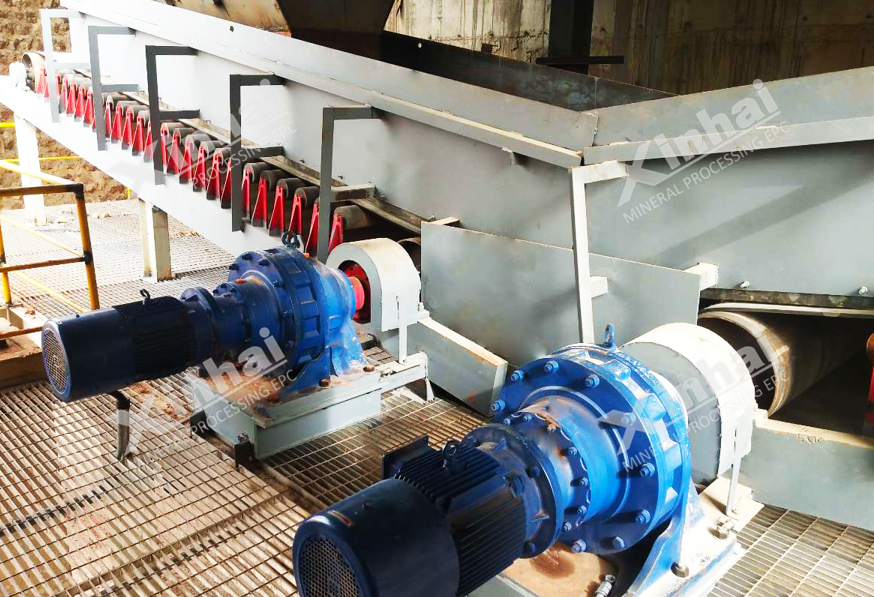The magnesite flotation process is also one of the important factors affecting the flotation effect. Currently, the most commonly used flotation processes include a single reverse flotation process, a reverse flotation-forward flotation process, and a reverse flotation-forward flotation-magnetic separation process. United Craftsmanship.

Research on the reverse flotation process started earliest, and it has a good removal effect on silicon impurities in magnesite. Yin Wanzhong et al. conducted experimental research on reverse flotation desilication of Dashiqiao magnesite. Under optimal conditions, the MgO content increased from 45.2% of the original ore to 46.3%, and the SiO2 content dropped from 1.88% to 0.4%. Wang Yubin and others used the reverse flotation process to conduct experimental research on the purification of Laizhou magnesite, and re-separated the reverse flotation tailings to obtain a magnesite concentrate with a yield of 70.6% and an MgO content of 46.8%.
Compared with the forward flotation or reverse flotation process alone, the reverse flotation-forward flotation combined process has greatly improved the grade and recovery rate of magnesite, and is currently the most commonly used flotation process. Dai Shujuan et al. [19] conducted desilication research on high-silicon magnesite. They first used reverse flotation to reduce the silicon content to 0.35%, and then used forward flotation for the reverse flotation concentrate to obtain a final concentrate with a silicon content of 0.28%. . Dong Qingguo and others used the reverse flotation-forward flotation process to conduct purification experiments on low-grade magnesite. The forward flotation used a rough separation and two selection processes. The MgO grade increased from 32.13% of the raw ore to 42.25%. Impurities The SiO2 and CaO contents were reduced to 0.19% and 6.73% respectively, achieving better purification effect.
The combined reverse flotation-forward flotation-magnetic separation process adds magnetic separation to the forward flotation, which can effectively remove iron impurities in magnesite and further improve the grade of magnesite. Yu Chuanmin improved the flotation process, using one stage of magnetic separation to remove iron, two stages of reverse flotation to remove silicon, and two stages of forward flotation to extract magnesium. At the same time, a stage of scavenging was added based on the fully open circuit test process. The MgO recovery rate has been greatly improved.
© 2021 Yantai KZ Mining Processing Technology & Equipment Inc.